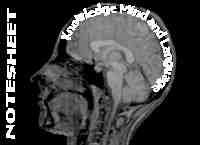

Summary: DENNETT DEVELOPS HIS POSITION THAT BELIEFS AND DESIRES AND OTHER SO-CALLED MENTAL WHATSITS ARE REALLY LOGICAL CONSTRUCTS BY DEVELOPING THE CONCEPT OF THE INTENTIONAL SYSTEM.
IF WE WISH TO PREDICT AND/OR EXPLAIN BEHAVIOUR, SAYS DENNETT, WE MAY ADOPT ANY OF THREE DIFFERENT STANCES.
'From this stance our predictions are based on the actual state of the particular system, and are worked out by applying whatever knowledge we have of the laws of nature.' (Dennett, in Lycan, p.168)
Sometimes you can get good predictions by assuming that the thing whose behaviour is being predicted is rational.
WHENEVER ONE CAN SUCCESSFULLY ADOPT THE INTENTIONAL STANCE TOWARDS AN OBJECT, THE OBJECT MAY BE CALLED (SAYS DENNETT) AN INTENTIONAL SYSTEM.
What is meant by being able to adopt the intentional stance 'successfully'? The test is whether the system's behaviour can be successfully predicted, 'and most efficiently predicted' ... 'by adopting the intentional stance towards them.'
STICH GLOSSES THE DEFINITION THUS: 'ANY OBJECT WILL COUNT AS AN INTENTIONAL SYSTEM IF WE CAN USEFULLY PREDICT ITS BEHAVIOUR BY ASSUMING THAT IT WILL BEHAVE RATIONALLY. ' STICH, IN LYCAN, 2nd Edition, p.88.
Argument that the pattern of behaviour which supports folk psychology is objective.
Suppose…one of the Martians were to engage in a predicting contest with an Earthling. The Earthling and the Martian observe (and observe each other observing) a particular bit of local physical transaction. From the Earthling's point of view, this is what is observed. The telephone rings in Mrs Gardner's kitchen. She answers, and this is what she says: "Oh, hello dear. You 're coming home early? Within the hour? And bringing the boss to dinner? Pick up a bottle of wine on the way home, then, and drive carefully." On the basis of this observation, our Earthling predicts that a large metallic vehicle with rubber tyres will come to a stop in the drive within one hour, disgorging two human beings one of whom will be holding a paper bag containing a bottle containing an alcoholic fluid. The prediction is a bit risky, perhaps, but a good bet on all counts. The Martian makes the same prediction, but has to avail himself of much more information about an extraordinary number of interactions of which, so far as he can tell, the Earthling is entirely ignorant. For instance, the deceleration of the vehicle at intersection A, five miles from the house, without which there would have been a collision with another vehicle -whose collision course had been laboriously calculated over some hundreds of meters by the Martian. The Earthling's performance would look like magic! How did the Earthling know that the human being who got out of the car and got the bottle in the shop would get back in? The coming true of the Earthling's prediction, after all the vagaries, intersections, and branches in the paths charted by the Martian, would seem to anyone bereft of the intentional strategy as marvellous and inexplicable…There are patterns in human affairs that impose themselves, not quite inexorably but with great vigor, absorbing physical perturbations and variations that might as well be considered random; these are the patterns that we characterize in terms of the belief, desires, and intentions of rational agents."
Daniel Dennett, "True Believers: the intentional strategy", reprinted in Lycan, Mind and Cognition, 2nd edition, p.81,2.
Three different instantiations of one and the same intentional system: Mary, Ruth and Sally.
to achieve a reconciliation between 'our vision of ourselves as responsible, free, rational agents, and our vision of ourselves as complex parts of the physical world of science.' Dennett, quoted by Stitch, in Lycan, 2nd edition, p.87.
Dennett makes repeated use of the illustration of the chess-playing computer (Stich, Lycan, 2nd edition, p.88).